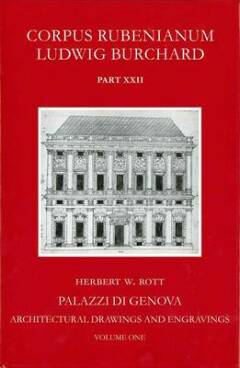
- Afhalen na 1 uur in een winkel met voorraad
- Gratis thuislevering in België vanaf € 30
- Ruim aanbod met 7 miljoen producten
- Afhalen na 1 uur in een winkel met voorraad
- Gratis thuislevering in België vanaf € 30
- Ruim aanbod met 7 miljoen producten
Zoeken
€ 201,40
+ 402 punten
Omschrijving
In 1622 Rubens published a splendid volume on Genoese Renaissance architecture, with precise engravings depicting facades and plans of a dozen villas and palaces. In publishing famous examples of 'modern' architecture, Rubens intended to trace the development of architecture in his own country and all over Europe. He believed that the true principles of good building, both aesthetically and functionally, were discovered by the Ancients and rediscovered in Renaissance Italy. In publishing his book at the height of his fame, Rubens succeeded in presenting himself not only as a great painter but also as a connoisseur and authoritative teacher in the field of architecture. This two-volume part of the Corpus Rubenianum explains the history of Rubens's book, analyses in detail his comments and interpretations of the original plans and reproduces all drawings.
Specificaties
Betrokkenen
- Auteur(s):
- Uitgeverij:
Inhoud
- Aantal bladzijden:
- 588
- Taal:
- Engels
- Reeks:
- Reeksnummer:
- nr. 22
Eigenschappen
- Productcode (EAN):
- 9781872501338
- Verschijningsdatum:
- 4/10/2002
- Uitvoering:
- Hardcover
- Formaat:
- Genaaid
- Afmetingen:
- 184 mm x 270 mm
- Gewicht:
- 2236 g

Alleen bij Standaard Boekhandel
+ 402 punten op je klantenkaart van Standaard Boekhandel
Beoordelingen
We publiceren alleen reviews die voldoen aan de voorwaarden voor reviews. Bekijk onze voorwaarden voor reviews.











